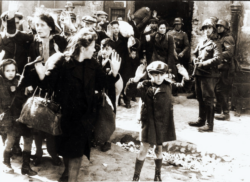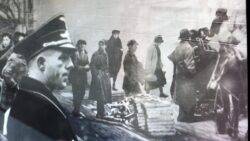In 1943, the Warsaw Ghetto uprising took place. It was a courageous act of resistance against the Nazis by several hundred Jewish fighters.
Since 1941, the Jewish population of the Polish capital – approximately 400,000 people – had been confined by the Nazi occupiers to a small neighbourhood in the center of the city. Many died as a result of starvation and diseases there. Others were sent to the Treblinka death camp.
The Warsaw Ghetto Uprising

When the Nazis came to clear out the Warsaw Ghetto, they were met with fierce resistance.
On a spring day in April 19, 1943, German troops entered the ghetto to deport the last survivors. Despite being outnumbered and outgunned, the Jewish resistance fighters fought for nearly a month before being crushed, killed or sent to death camps. The ghetto was then razed to the ground.
There were very few survivors of the Warsaw Ghetto uprising, but those still alive and their descendants carry memories of the ghetto to this day.
Eighty years on, how is Poland remembering those events in a country ruled by a right-wing populist government?
Narim ne Laouadi and Renaud Lefort revisit the Warsaw Ghetto for WTX News.
Read more on related topics:
Sirens wail throughout Poland to mark the Warsaw Uprising
Seven years on, Ivorian beach resort of Grand-Bassam still scarred by deadly attack





